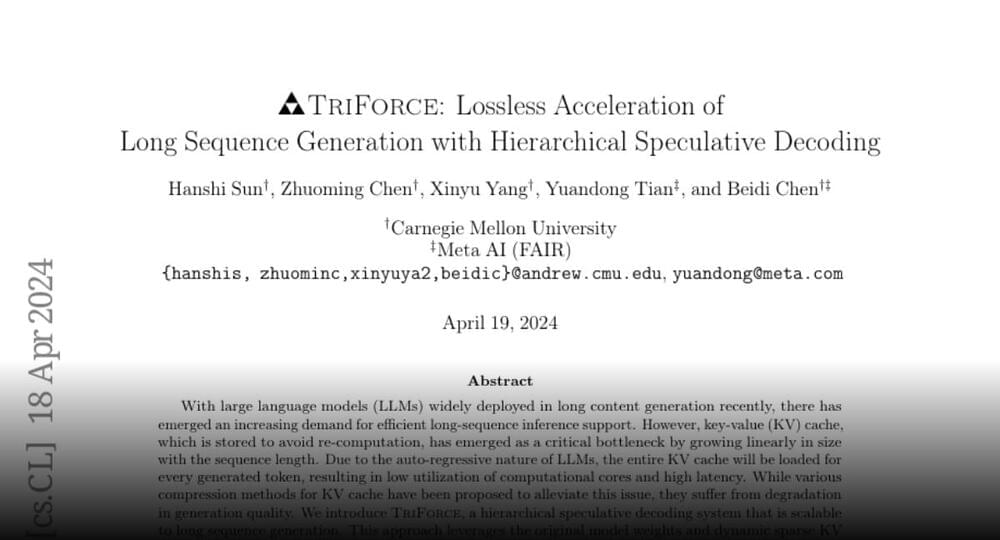Gigantic lions prowled North America for tens of thousands of years before going extinct. Where did they go?



Michio Kaku: 3 mind-blowing predictions about the future Watch the newest video from Big Think: https://bigth.ink/NewVideoLearn skills from the world’s top m…

A lot of the interesting challenges with renewables are happening behind the scenes.🌌Get Nebula using my link for 40% off an annual subscription: https://go…

The researchers found that the ability to tolerate pain played a role in this apparent protective effect.
That explains why being active could lower the risk of having severe chronic pain, whether or not it was widespread throughout the body.
“This suggests that physical activity increases our ability to tolerate pain and may be one of the ways in which activity helps to reduce the risk of severe chronic pain,” says Årnes.
Many of these are freely available to read online!

From Carnegie Mellon and Meta.
TriForce.
Lossless Acceleration of Long Sequence Generation with Hierarchical Speculative Decoding.
With large language models (LLMs) widely deployed in long content generation recently, there has emerged an increasing demand for…
Join the discussion on this paper page.

A new technique can be used to predict the actions of human or AI agents who behave suboptimally while working toward unknown goals.
MIT and other researchers developed a framework that models irrational or suboptimal behavior of a human or AI agent, based on their computational constraints. Their technique can help predict an agent’s future actions, for instance, in chess matches.
To build AI systems that can collaborate effectively with humans, it helps to have a good model of human behavior to start with. But humans tend to behave suboptimally when making decisions.
